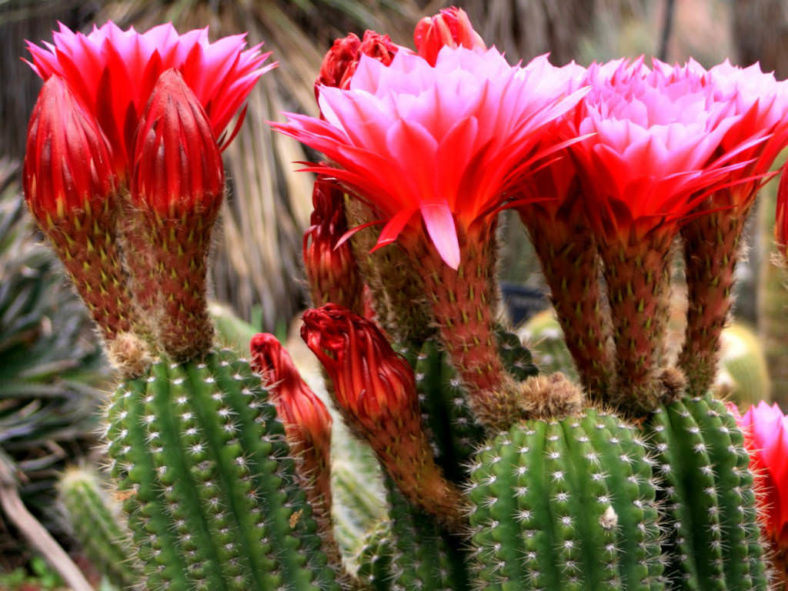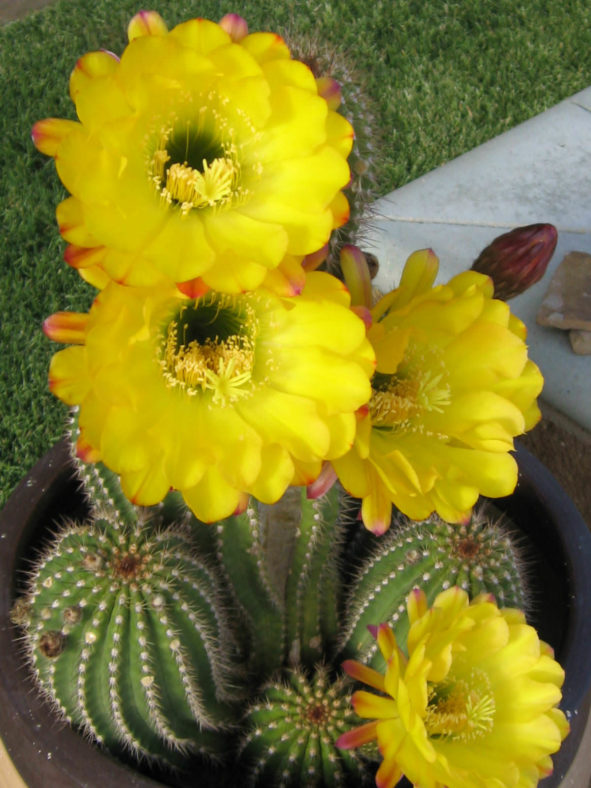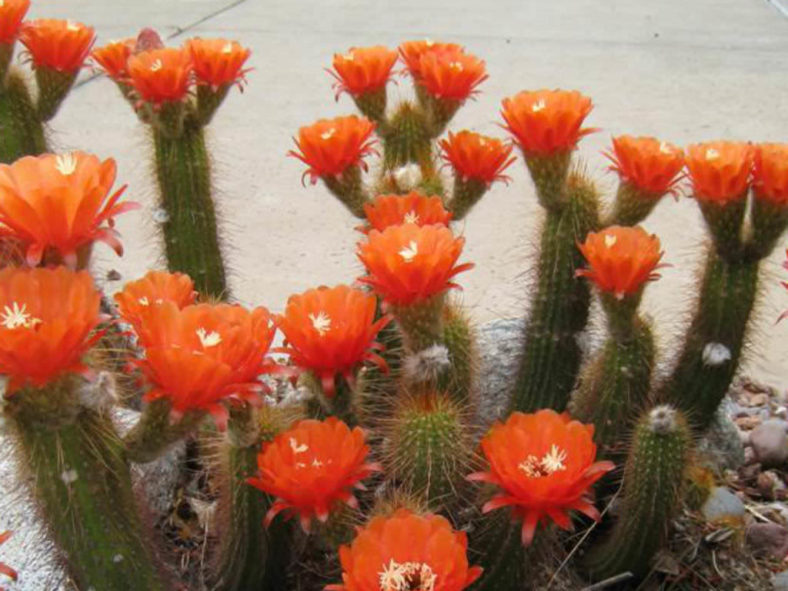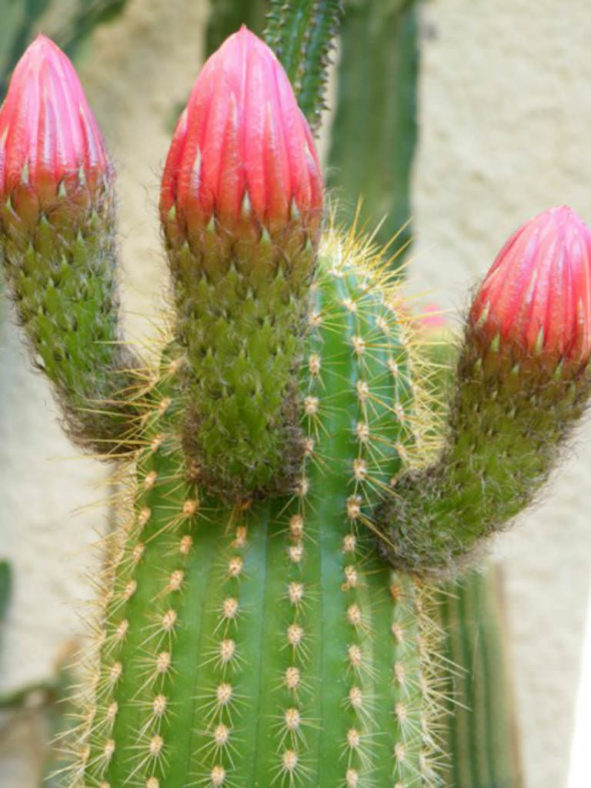Scientific Name
Soehrensia huascha (F.A.C.Weber) Schlumpb.
Common Name(s)
Desert's Blooming Jewel, Red Torch, Red Torch Cactus
Synonym(s)
Helianthocereus huascha, Echinopsis huascha, Lobivia huascha, Salpingolobivia huascha, Trichocereus huascha
Scientific Classification
Family: Cactaceae
Subfamily: Cactoideae
Tribe: Cereeae
Subtribe: Trichocereinae
Genus: Soehrensia
Etymology
The specific epithet "huascha" (pronounced "WAS-kuh") is adopted from a local Argentine Quechua term meaning "orphan," originally used as a vernacular name for this species.
Origin
Soehrensia huascha is native to Argentina.
Description
Soehrensia huascha, also known as Echinopsis huascha or Trichocereus huascha, is a slow-growing cactus with light green stems with 12 to 18 ribs and clusters of yellowish to brownish spines. It branches at the base, forming clumps over time. The cylindrical stems are upright or creeping and can grow up to 3 feet (90 cm) long and 3.2 inches (8 cm) in diameter. Each areole bears 1 to 3 central and 9 to 11 radial spines. The radial spines can grow up to 0.6 inches (1.5 cm) long, while the central spines can reach lengths of up to 2.4 inches (6 cm).
The flowers are diurnal, scentless, and vary in color from red to orange and yellow. They are funnel-shaped and appear near the top of the stems from spring to early summer, measuring up to 4 inches (10 cm) in length and 3 inches (7.5 cm) in diameter.

Subspecies of Soehrensia huascha
- Soehrensia huascha subsp. huascha
- Soehrensia huascha subsp. robusta
How to Grow and Care for Soehrensia huascha
Hardiness: USDA hardiness zone 9b to 11b: from 25°F (-3.9°C) to 50°F (10°C).
If you can grow cacti and succulents successfully, you can likely grow the Echinopsis species without too much trouble. Like many cacti, they prefer a drying period between waterings, even when slightly wilted. When you water, however, you should water deeply. The plant will noticeably plump up. The cactus mustn't be exposed to prolonged dampness and standing water. Never let your cactus sit in a dish of water. Lastly, ensure that fertilizer is applied during the growing season for the best results.
Echinopsis can be easily rooted from offsets, which cluster around the mother plant's base. Cut offsets close to the stem at the narrowest point. When rooting cacti from cuttings, let the fresh cutting dry out slightly on a paper towel, and cut the cacti at the narrowest place possible. After a few days to a few weeks, depending on the size, the cut surface should have dried out and formed a callous or slightly rough opening. Once the callous has formed, place the cutting in a rooting mixture of fast-draining cacti soil.
See more at How to Grow and Care for Echinopsis.
Links
- Back to genus Soehrensia
- Succupedia: Browse succulents by Scientific Name, Common Name, Genus, Family, USDA Hardiness Zone, Origin, or cacti by Genus
Photo Gallery
Click on a photo to see a larger version.


